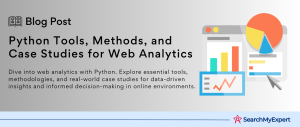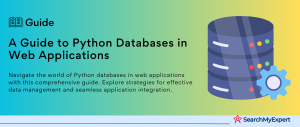Python and GraphQL in Web Development: Revolutionizing API Interaction
Python: The Versatile Programming Language
Python, a dynamic and versatile programming language, stands out in the tech world for its simplicity and power. Renowned for its readability, Python makes coding accessible for beginners and efficient for experienced developers. Its vast libraries and frameworks, like Django and Flask, are pivotal in web development, allowing for rapid development and deployment.
GraphQL: A Query Language Transforming API Interaction
Enter GraphQL, a query language developed by Facebook in 2015. It’s not just a language; it’s a complete solution for server-side API. With GraphQL, you define your data’s structure, not the server. This means clients have the power to request exactly what they need, nothing more, nothing less. This flexibility is a game-changer in API design.
The Role of APIs in Web Development
Web development isn’t just about building websites. It’s about creating interactive, dynamic experiences on the web. At its core, web development involves client-server interaction. APIs (Application Programming Interfaces) are the cornerstone of this interaction. They allow different software components to communicate, making them indispensable in modern web development.
Traditional APIs: The Limitations
Traditional APIs, like REST, come with limitations. They often lead to over-fetching or under-fetching of data. Over-fetching means you’re getting more data than needed while under-fetching means making additional requests for more data. This inefficiency can bog down applications, especially those relying on real-time data.
The Need for a Better Approach
The digital world craves efficiency and precision. Traditional APIs sometimes fall short in delivering this. Hence, the a need for a better approach – one that is efficient, flexible, and precise. GraphQL emerges as a solution, addressing these limitations by allowing clients to specify exactly what they need.
Understanding GraphQL
What is GraphQL?
GraphQL stands as a modern marvel in the world of APIs. Developed by Facebook, it’s not just a query language; it’s a runtime for executing those queries. It allows clients to request exactly what they need and nothing more. In essence, GraphQL is about asking for specific data and getting precisely that.
How Does GraphQL Work?
Imagine having a conversation with your data. You ask, and it responds. That’s GraphQL in a nutshell. Clients send queries to the server, describing the data they need. The server then returns JSON objects, fulfilling those exact queries. This process eliminates over-fetching and under-fetching issues commonly seen in traditional APIs.
Schema Definition and Data Querying
At the heart of GraphQL is the schema. This is where you define the types of data available and the ways clients can interact with it. Each schema is a collection of types with fields that are accessible. When clients query, they are effectively traversing these fields, creating a specific request for data.
GraphQL vs RESTful APIs
Data Fetching Efficiency
In a RESTful API, you might end up calling multiple endpoints to gather all your data. Not with GraphQL. A single query can retrieve a variety of data, reducing the number of requests and increasing efficiency.
Flexibility
REST APIs define the structure of the response on the server. In contrast, GraphQL hands this power to the client. This flexibility means no unnecessary data is transmitted, and clients can evolve without server adjustments.
The GraphQL Advantage
- No Over or Under Fetching:
Get exactly what you need, no more, no less. - Single Request:
Fetch diverse data in one go. - Type Safety:
Defined schema offers a contract for the data. - Real-Time Data:
Enables efficient real-time data management through subscriptions.
GraphQL offers a more efficient, flexible approach to data fetching compared to traditional RESTful APIs. Its ability to precisely tailor requests to clients’ needs positions it as a superior choice in many web development scenarios.
Why Python with GraphQL?
Python: A Prime Choice for API Development
Python’s reputation in the development world is stellar. It’s known for its simplicity, readability, and versatility. These traits make Python exceptionally suitable for API development. Python’s syntax and dynamic nature allow developers to write reliable and maintainable code, a critical aspect of API development.
Rich Ecosystem of Libraries and Frameworks
Python’s strength lies in its vast ecosystem, especially when it comes to GraphQL. Libraries like Graphene and Strawberry stand out.
- Graphene:
This library makes it a breeze to build GraphQL APIs in Python. It allows developers to use Python classes to define GraphQL schemas, offering a familiar and easy approach. - Strawberry: Another gem in the Python arsenal, Strawberry is built on Python-type hints, ensuring a more modern, Pythonic way of creating GraphQL APIs.
These libraries not only simplify the development process but also ensure that the APIs are robust and scalable.
Seamless Integration with Existing Infrastructure
Python’s ability to integrate effortlessly with existing infrastructure and databases is a significant advantage. Whether you’re dealing with SQL databases or NoSQL ones, Python has tools and libraries to handle them. This integration capability means that incorporating GraphQL into existing Python projects is straightforward, reducing development time and complexity.
The Python-GraphQL Synergy
The combination of Python and GraphQL is like a match made in tech heaven. Python brings its robust, easy-to-use, and versatile nature to the table, while GraphQL adds its efficiency and precision in data handling. Together, they create a powerful duo for API development, capable of handling modern web application demands with ease.
Building a GraphQL API with Python
Step-by-Step Guide to Setting Up a GraphQL Server
Building a GraphQL server in Python involves a series of straightforward steps. Here’s how you can do it:
- Select a Python Framework: Begin by choosing a Python web framework like Flask or Django, which serves as the foundation of your server.
- Install GraphQL Libraries: Use pip, Python’s package installer, to add GraphQL libraries such as Graphene to your project.
- Initialize Your Server:
Using your chosen framework, set up the basic structure for your server.
Creating a Schema in GraphQL
The schema is the core of your GraphQL API. It defines the types of data you can query.
- Defining Types: In Python, create classes that represent different data types in your schema.
- Establishing Fields: These classes should contain fields that are accessible through the API, defining what data can be queried.
Writing Resolvers for Data Retrieval
Resolvers are essential functions in GraphQL that fetch data for each field in your schema.
- Connection to Data Sources: Resolvers link each field to your actual data, whether it’s a database or another data source.
- Logic Implementation:
These functions embody the logic for retrieving data for each field.
The Mechanics of Data Retrieval in GraphQL
GraphQL offers a robust mechanism for data retrieval, characterized by:
- Queries:
These are used for fetching data. - Mutations:
Employed for creating, updating, or deleting data. - Subscriptions:
Useful for real-time data updates.
By following these steps and understanding the core components like schema creation, resolvers, and data retrieval mechanisms, you can effectively build a functional GraphQL API with Python.
Integrating GraphQL into Front-End Development
Consuming a GraphQL API in Front-End
Integrating GraphQL into the front end is a crucial part of the development process. It involves connecting your front-end application with the GraphQL server to fetch and manipulate data.
Popular GraphQL Client Libraries
Two of the most popular GraphQL client libraries are Apollo Client and Relay.
- Apollo Client:
Known for its versatility and ease of integration with popular front-end frameworks like React, Vue, and Angular. It offers features like caching, optimistic UI updates, and real-time data with subscriptions. - Relay:
Developed by Facebook, Relay is designed specifically for React applications. It’s optimized for performance and scalability, offering efficient data fetching and state management.
Implementing GraphQL Queries in Front-End
Consuming a GraphQL API typically involves sending queries and mutations from the front end to the server and handling the responses.
- Set Up the Client:
Initialize Apollo Client or Relay in your front-end application. - Write GraphQL Queries:
Define the queries to fetch data from the server. - Integrate Queries with UI Components: Use the client library to send queries and use the response to render UI components.
- Handle Responses and Errors: Implement logic to handle the data received and any potential errors.
By following these steps and leveraging client libraries like Apollo Client or Relay, you can effectively integrate a GraphQL API into your front-end development process, enhancing the efficiency and performance of your web applications.
Advanced Features and Use Cases
Exploring Advanced Functionalities
GraphQL goes beyond basic queries. Let’s delve into its advanced features:
Mutations
- Purpose:
Used for creating, updating, or deleting data. - Process:
Similar
to queries but intended for write operations.
Subscriptions
- Real-Time Updates:
Allows real-time communication between server and client. - Applications: Ideal for features like live chats, notifications, and real-time data feeds.
Authentication
- Securing APIs: Integrating authentication mechanisms to protect data.
- Methods:
Often involves tokens or OAuth for secure access.
Real-World Applications
Several successful web applications have leveraged the Python-GraphQL combination. Examples include social media platforms, e-commerce sites, and content management systems. These applications benefit from GraphQL’s efficient data handling and Python’s robust backend capabilities.
Performance Optimization and Best Practices
Optimizing GraphQL APIs for performance is crucial. Here are some best practices:
- Efficient Querying:
Avoiding over-fetching and under-fetching of data. - Caching Strategies:
Implementing caching on the client side to reduce server load. - Batching and Merging:
Reducing the number of API calls through batching and merging requests. - Monitoring and Analytics:
Regularly monitoring the API performance and using analytics to optimize queries.
By understanding and implementing these advanced features, real-world use cases, and optimization techniques, developers can build highly efficient, secure, and scalable web applications using Python and GraphQL.
Future Considerations
Summarizing the Key Benefits
Python and GraphQL together offer a potent combination for web development. Key benefits include:
- Efficiency in Data Fetching:
GraphQL’s ability to fetch exactly what is needed reduces bandwidth usage and improves performance. - Flexibility and Scalability:
Python’s versatility combined with GraphQL’s flexible data querying offers immense scalability. - Strong Community and Ecosystem: Both Python and GraphQL are backed by strong communities, offering robust libraries and frameworks.
- Ease of Maintenance: Python’s readability and GraphQL’s clear schema definitions make maintenance simpler.
Trends and Future Prospects
GraphQL’s adoption is on the rise, signaling a shift in how APIs are designed and consumed. Current trends suggest:
- Increased Adoption in Microservices: Its efficiency makes it ideal for microservices architecture.
- Growing Use in Real-Time Applications: With its subscription feature, GraphQL is becoming a go-to for real-time applications.
- Enhanced Tooling and Integrations: Continuous development in tooling around GraphQL is making it more accessible and powerful.
Encouraging Further Exploration
The journey into Python and GraphQL is one of continuous learning and exploration. Developers are encouraged to dive deeper into these technologies:
- Explore Further Resources:
Delve into official documentation, community forums, and advanced tutorials. - Experiment with Code:
Practical application is key to mastering these technologies. - Stay Updated: The tech field is ever-evolving. Stay updated with the latest trends and updates in Python and GraphQL.
As we look to the future, the role of Python and GraphQL in web development is set to grow, offering exciting opportunities for developers to build more efficient, flexible, and robust web applications.
Conclusion
The synergy of Python and GraphQL in web development offers a powerful, efficient, and flexible approach to API design. With Python’s robust ecosystem and GraphQL’s precise data fetching, developers can build scalable, maintainable applications. The growing adoption and continuous evolution in this field point towards a bright future, encouraging developers to delve deeper into these technologies for innovative solutions in web development.
Collaborate with seasoned Python Development Service Agencies for superior solutions.
Table of Contents
Toggle






